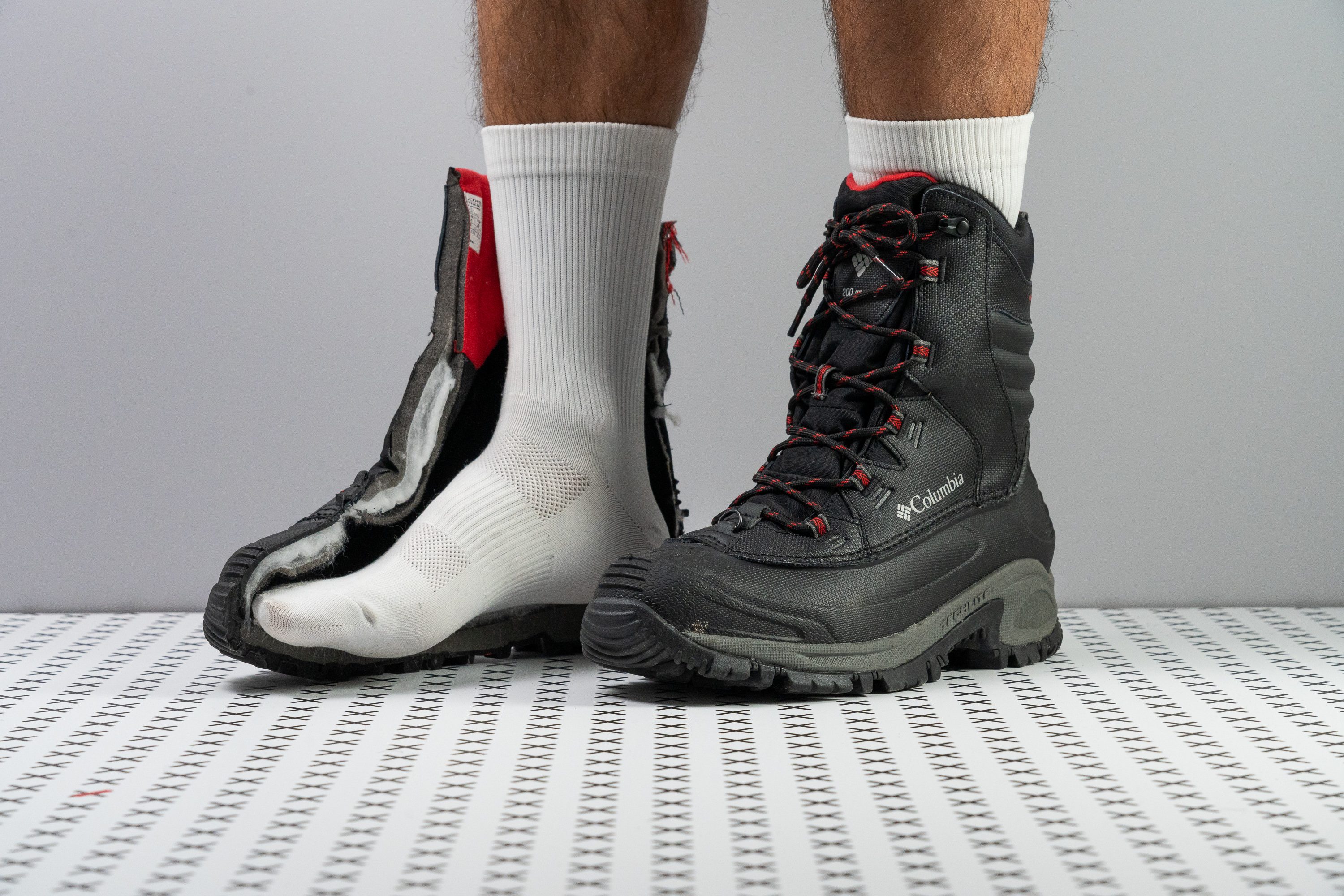Our verdict
- Top pick in best waterproof hiking boots
- Top pick in best winter hiking boots
Pros
- Jaw-dropping comfort
- Remarkable insulation
- Watertight upper
- Excellent durability
- Plenty of cushioning
- High level of support
- Reliable grip
- Affordable for its kind
Cons
- Restrictive toebox
- Heavier than average
Audience verdict
- Top 25% in hiking boots for plantar fasciitis
- Top 22% most popular hiking boots
Comparison
The most similar hiking boots compared
+ + Add a shoe | |||||
|---|---|---|---|---|---|
| Audience score | 85 Great! | 84 Good! | 82 Good! | 84 Good! | |
| Price | $130 | $160 | $350 | $230 | |
| Trail terrain | Technical | Moderate | Moderate | Technical | |
| Shock absorption | High | Low | - | Low | |
| Energy return | Moderate | Moderate | - | Moderate | |
| Weight lab Weight brand | 26 oz / 737g 24.5 oz / 694g | 19.9 oz / 563g | 26.5 oz / 751g | 23.4 oz / 663g 23.1 oz / 655g | |
| Breathability | Warm | Warm | Warm | Warm | |
| Use | Day HikingSnowBeginners | BackpackingDay HikingSnowBeginners | Day HikingSnow | BackpackingDay HikingSnow | |
| Orthotic friendly | ✓ | ✓ | ✓ | ✓ | |
| Drop lab | 16.2 mm | 16.4 mm | 17.2 mm | 18.0 mm | |
| Size | Slightly small | Slightly small | Half size small | True to size | |
| Midsole softness | Balanced | Firm | Firm | Balanced | |
| Difference in midsole softness in cold | Normal | Small | Small | Normal | |
| Heel counter stiffness | Moderate | Stiff | Stiff | Stiff | |
| Stiffness | Stiff | Flexible | Stiff | Stiff | |
| Outsole hardness | Average | Average | Average | Average | |
| Waterproofing | Waterproof | Waterproof | Waterproof | Waterproof | |
| Material | Leather | LeatherMesh | Leather | Textile | |
| Season | Winter | Winter | Winter | Winter | |
| Toebox durability | Good | Bad | Decent | Good | |
| Heel padding durability | - | Bad | Good | Good | |
| Outsole durability | - | Decent | Decent | Decent | |
| Width / fit | Wide | Medium | Wide | Wide | |
| Toebox width | Medium | Medium | Narrow | Medium | |
| Lug depth | 5.7 mm | 4.6 mm | 5.0 mm | 4.7 mm | |
| Heel stack lab | 46.9 mm | 38.7 mm | 41.6 mm | 38.0 mm | |
| Forefoot | 30.7 mm | 22.3 mm | 24.4 mm | 20.0 mm | |
| Widths available | NormalWide | Normal | NormalWide | Normal | |
| Technology | - | - | Gore-TexOrtholiteVibram | Gore-TexOrtholite | |
| Cut | High cut | Mid cut | Mid cut | High cut | |
| Removable insole | ✓ | ✓ | ✓ | ✓ | |
| Ranking | #22 Bottom 46% | #26 Bottom 36% | #32 Bottom 21% | #25 Bottom 39% | |
| Popularity | #9 Top 22% | #37 Bottom 9% | #36 Bottom 12% | #7 Top 18% |
Who should buy
Based on our field tests and lab findings, the Columbia Bugaboot III is a great option to consider if you need:
- a winter boot to tackle snow, slush, mud, and ice
- an insulated and waterproof hiker for moderate winters
- a pair of budget-friendly winter boots
- a hiking boot that will last you several winters
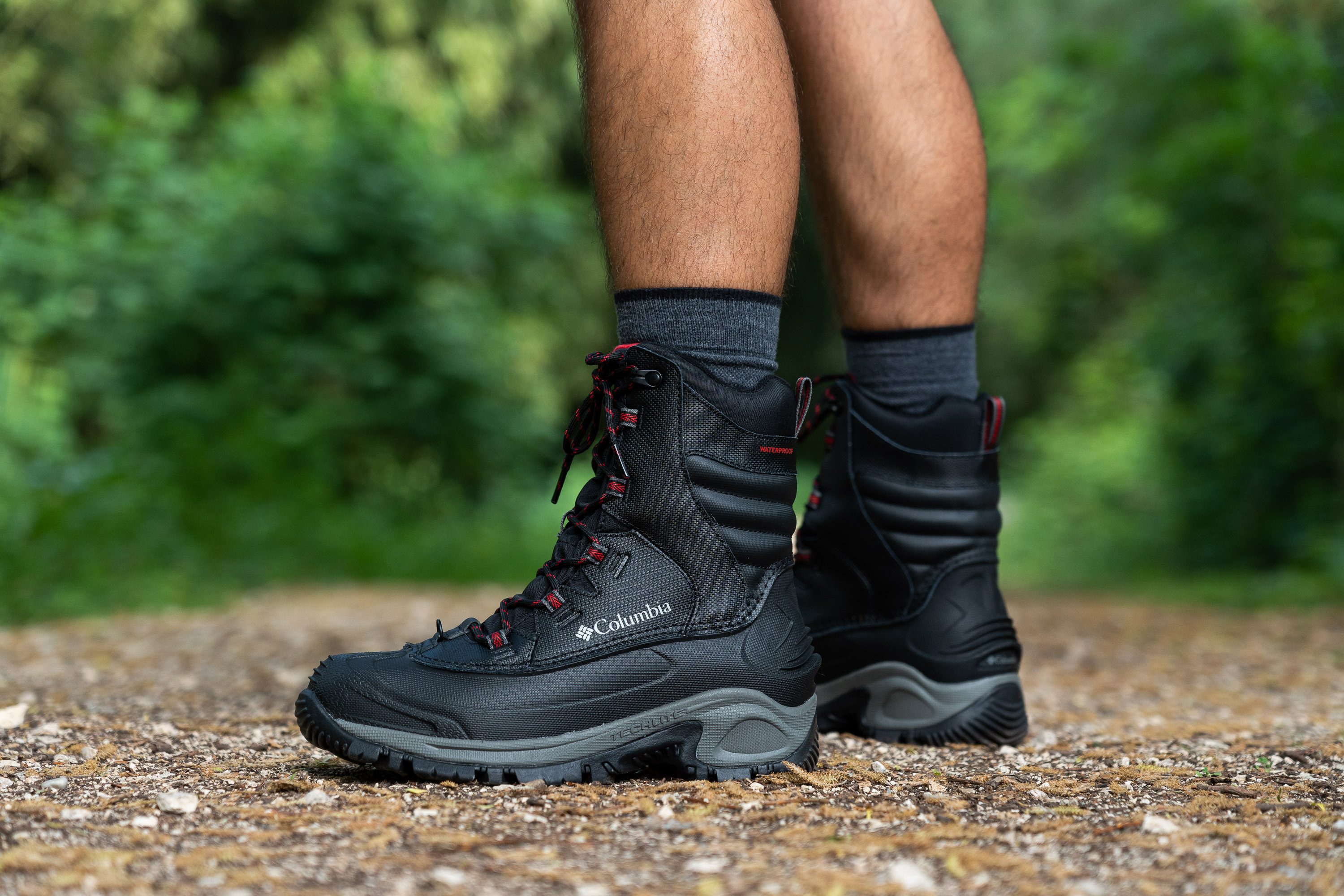
Who should NOT buy
We didn't find anything ultimately wrong with this Columbia winter boot. However, we can see how one can be turned off by the boot's burly design and hefty weight. A fantastic alternative to that would be another 200g-insulated Columbia boot - the Fairbanks Omni-Heat.
And if you're after a roomier toebox in your winter boots, check out the KEEN Targhee II Waterproof Mid.

Cushioning
Shock absorption
With a ton of midsole and insole foam, we aren't surprised to see a high shock absorption reading of 114 SA in the Bugaboot III. This Columbia boot soaks up most of the impact, protecting the feet and joints from excessive stress, even if you're carrying a heavy backpack.

| Bugaboot III | 114 SA |
| Average | 93 SA |
Energy return
Curiously, this burly boot also showed an above-average energy return of 53.2%. So you not only get a well-cushioned and stable ride but a lively one too!
| Bugaboot III | 53.2% |
| Average | 50.5% |
Heel stack
Cutting the boot in half, we found exactly how abundant the cushioning is in the Columbia Bugaboot III. A huge helping of foam is there to guard your feet from the freezingly cold ground while keeping them comfortably supported how hours on end.
Measuring the heel stack height, the caliper returned an insane number - 46.9 mm! That's a whole centimeter thicker than our lab-tested hiking boots on average.
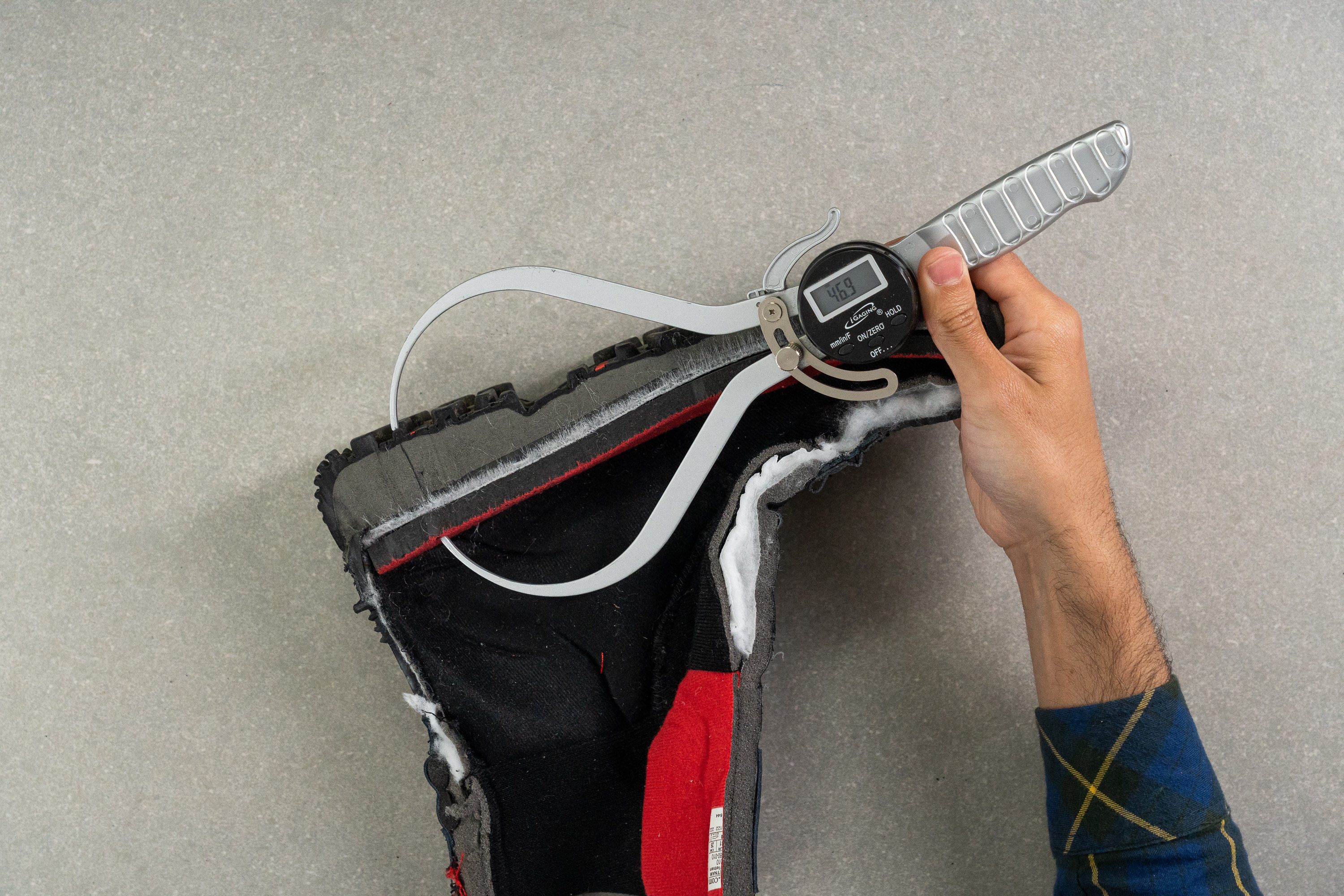
| Bugaboot III | 46.9 mm |
| Average | 36.3 mm |
Forefoot stack
We measured the Bugaboot's stack height in the forefoot at 30.7 mm. Some hiking boots don't even reach the same stack height in the heel!
That's a lot of cushioning for many hours on the trail.
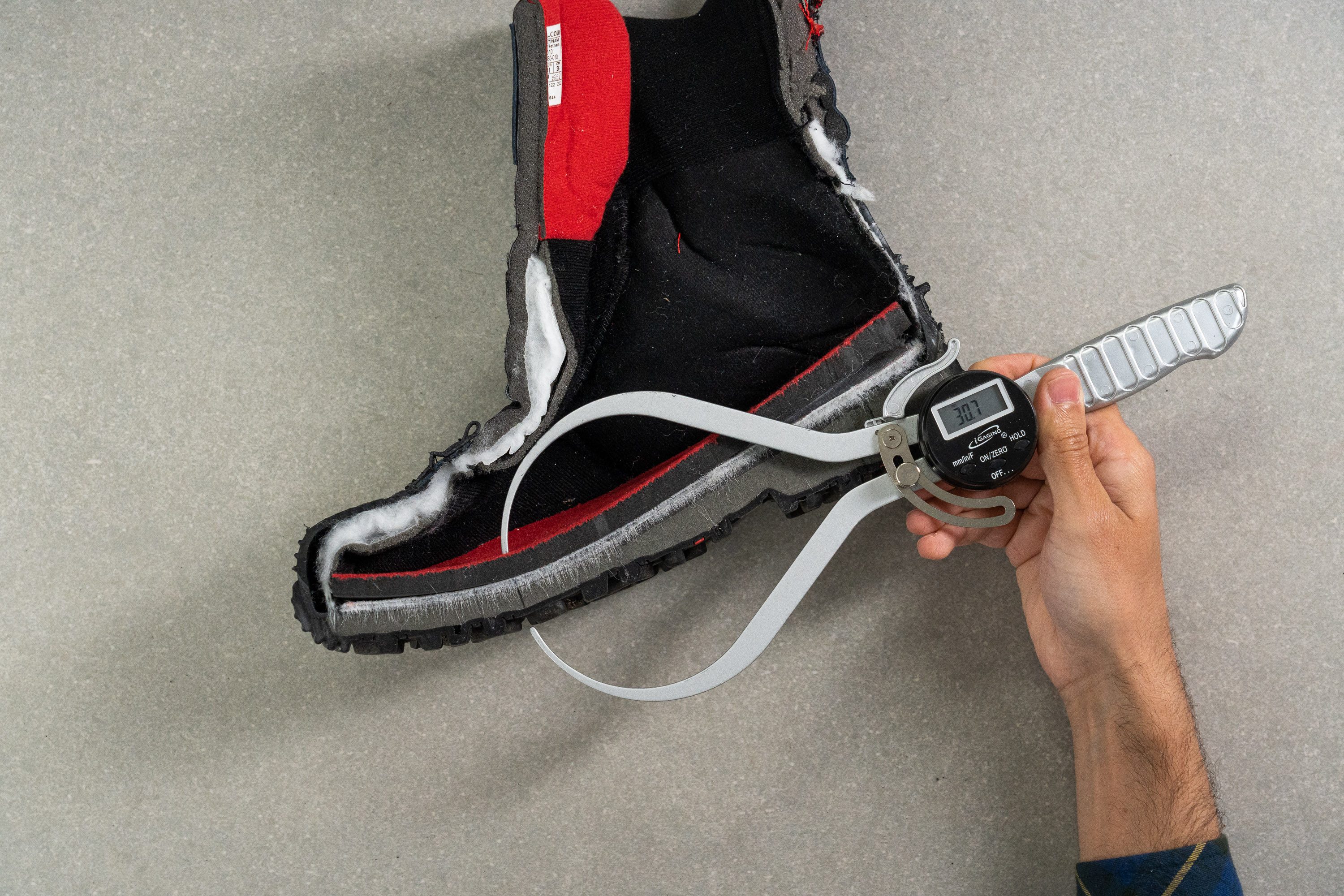
| Bugaboot III | 30.7 mm |
| Average | 23.0 mm |
Drop
The difference in stack heights gives this Columbia boot a very high drop of 16.2 mm. It is about 5 mm taller than the average.
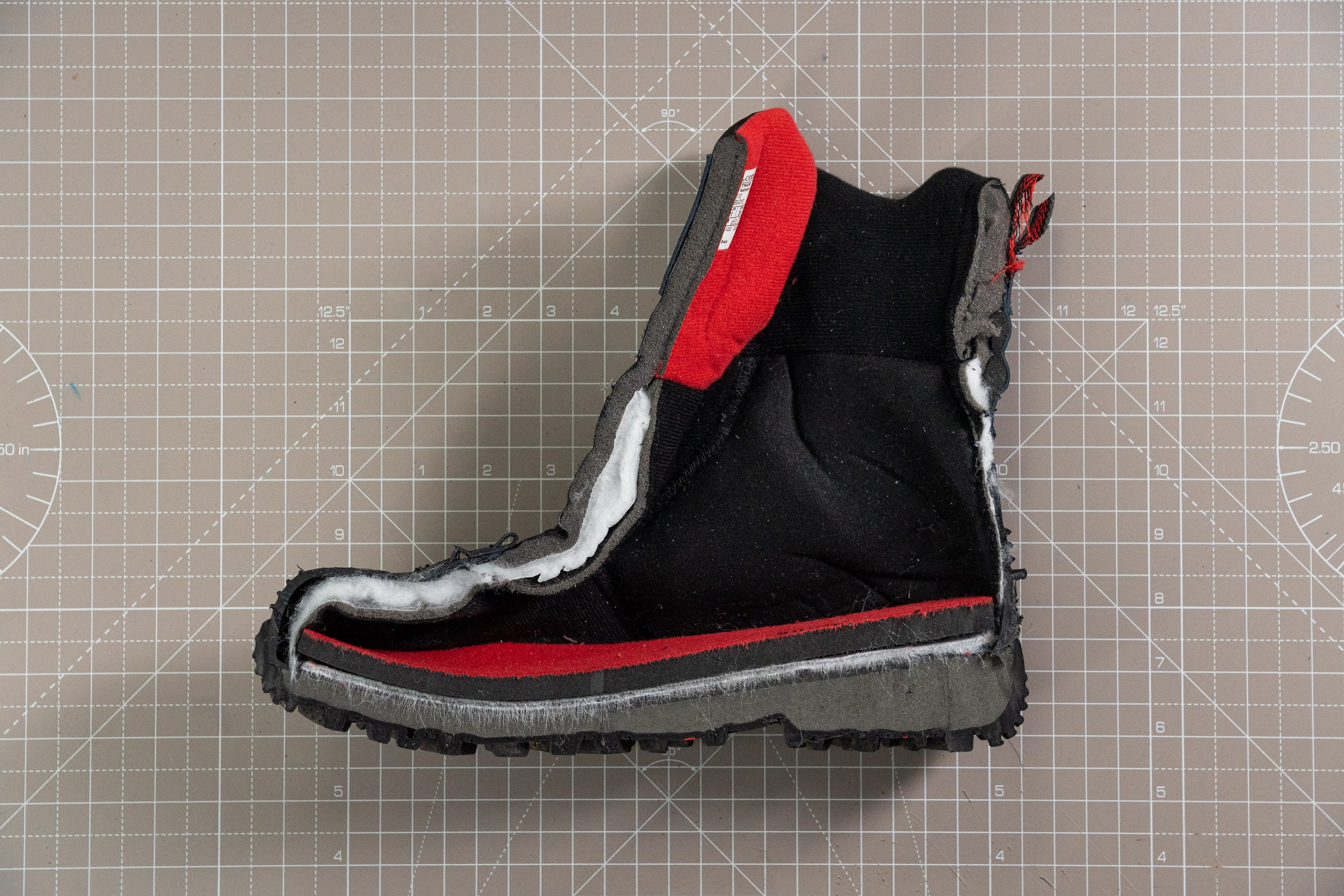
The elevated heel makes sure that you get enough impact protection upon landing.
| Bugaboot III | 16.2 mm |
| Average | 13.3 mm |
Midsole softness
With the help of a durometer, we measured the boot's cushioning softness at 26.8 HA. This is a little bit softer than average but only by 5%.
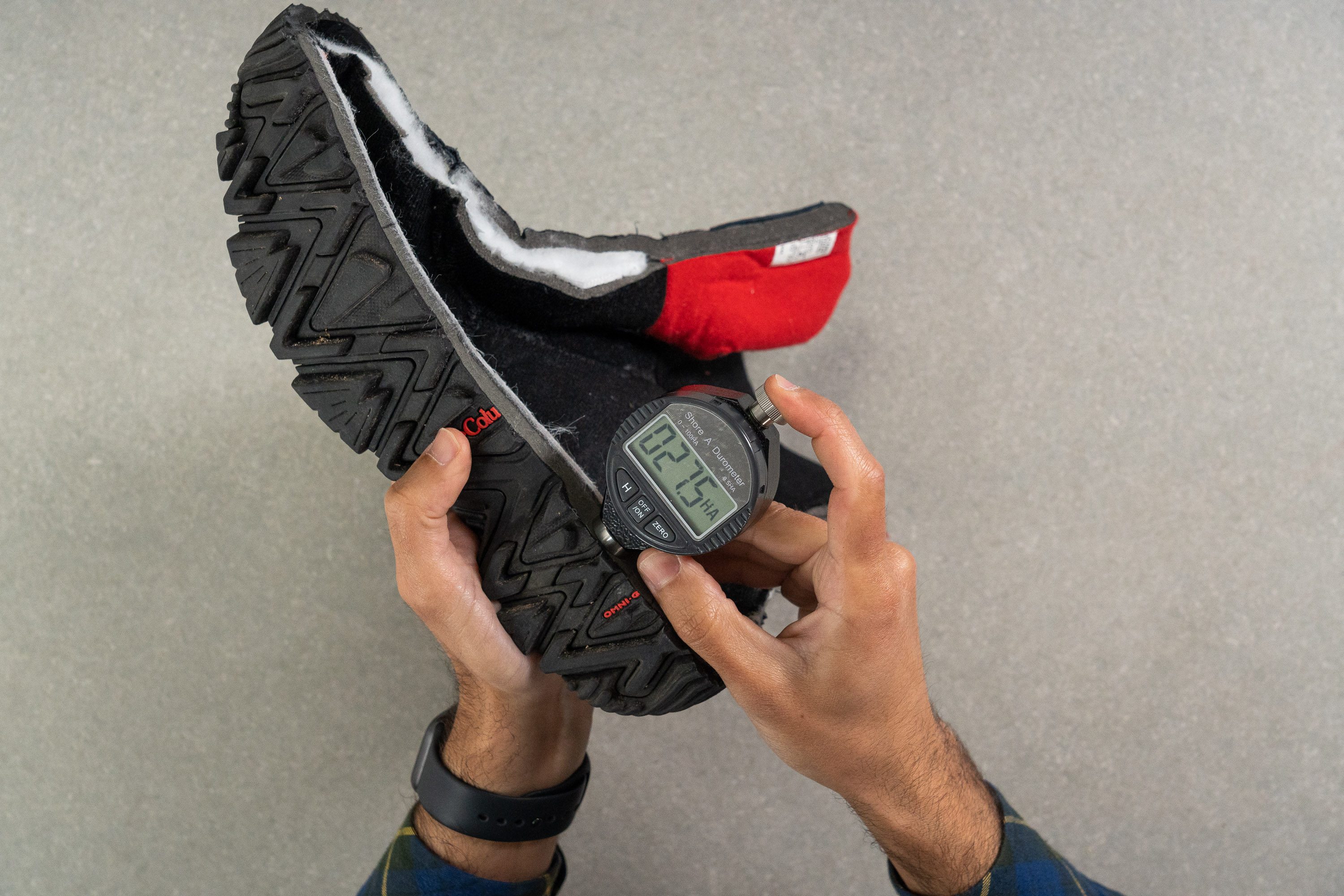
However, that's the softness we got at regular room temperature. Keeping in mind that it's a winter-ready boot, we had to re-create cold weather conditions as well.
| Bugaboot III | 26.8 HA |
| Average | 28.4 HA |
Size and fit
Size
Columbia Bugaboot III fits slightly small (57 votes).
Traction / Grip
Lug depth
This Columbia boot is equipped with really deep lugs to bite those slippery slopes.
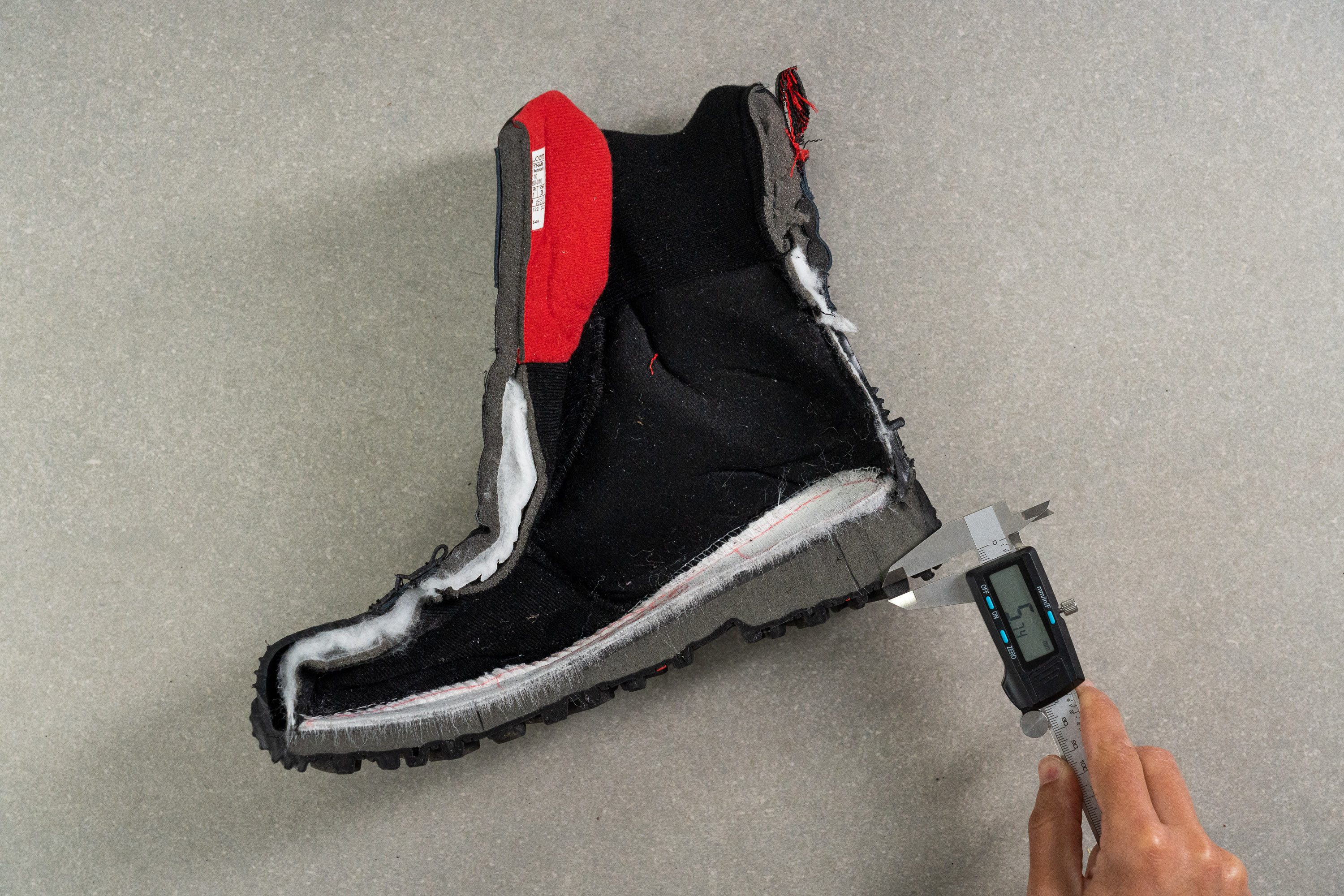
Measuring them with a caliper shows 5.7 mm. That's over a milimeter toothier than the average we see in hiking boots.
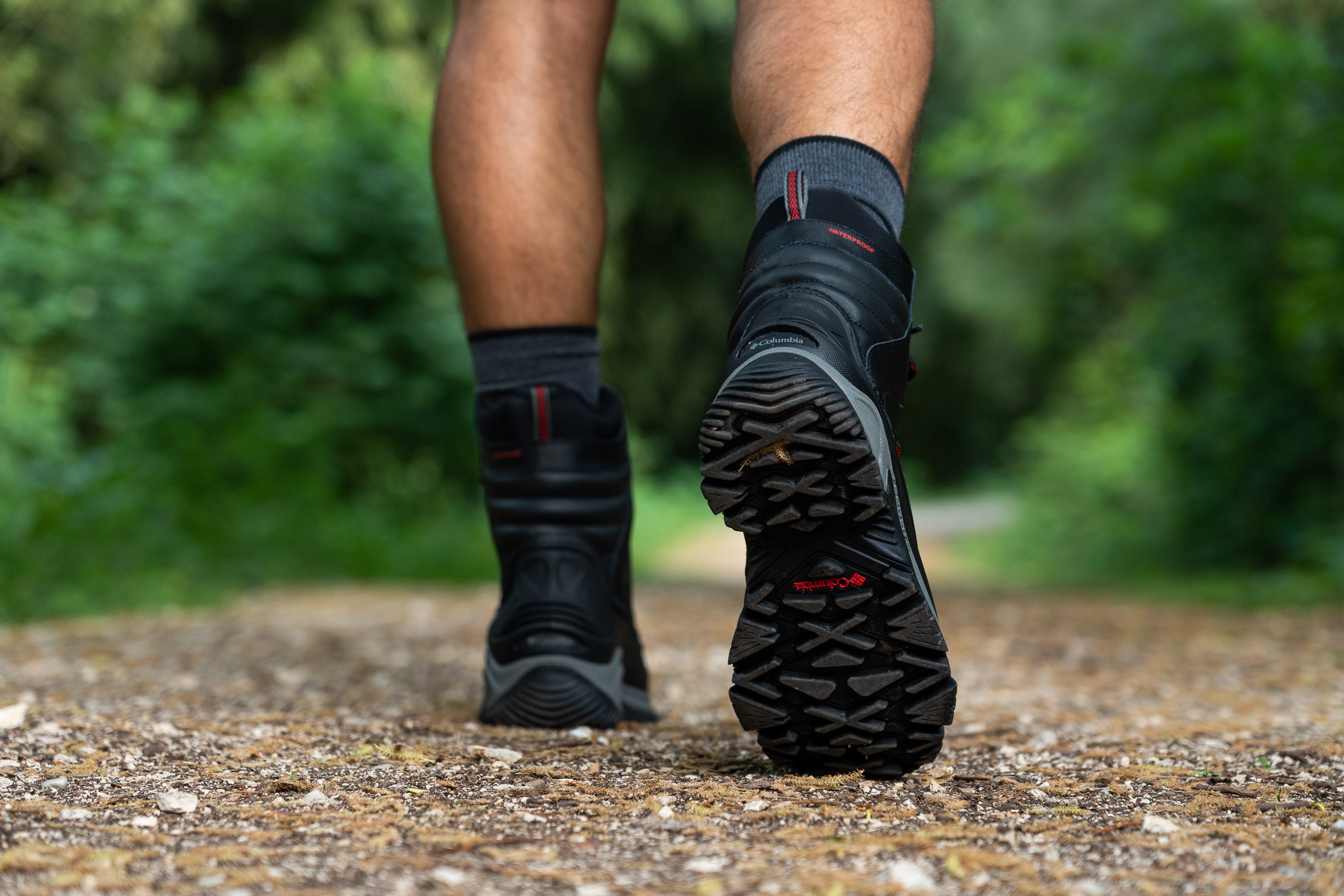
| Bugaboot III | 5.7 mm |
| Average | 4.3 mm |
Flexibility / Stiffness
There is not much foot flexion happening in the Columbia Bugaboot III. The boot's huge platform and sturdy build make you roll from heel to toe as opposed to naturally flexing your foot's way to the next step.
Our flexibility tester showed that the Bugaboot required a whopping force of 58.3N to bend by 30 degrees. That's one of the highest measurements we've ever got in a hiking boot!

| Bugaboot III | 58.3N |
| Average | 31.5N |
Weight
The Bugaboot III is a hefty one. Weighing it in a men's US size 9, we got a whopping 26 oz (737g)!
Not only is it significantly heavier than hiking boots on average, but it also weighs more than similar winter boots. The average weight of 200-gram insulated boots in our catalog is 19.4 oz (550g) - a whole 6.6 oz lighter than the Columbia Bugaboot!
| Bugaboot III | 26.0 oz (737g) |
| Average | 18.7 oz (531g) |
Breathability
A mere glance at the boot should be enough to understand that breathability is non-existent here. With its waterproof leather upper, 200-gram insulation, and 7-inch shaft height, the Bugaboot III is 100% airtight.
We still performed our smoke-pumping test to demonstrate how much this winter boot differs from its breathable counterparts. Obviously, we gave the Bugaboot the lowest breathability score of 1 out of 5.
What this Columbia boot is meant to do is keep your feet dry and warm even when the temperatures drop below 32°F (0°C).
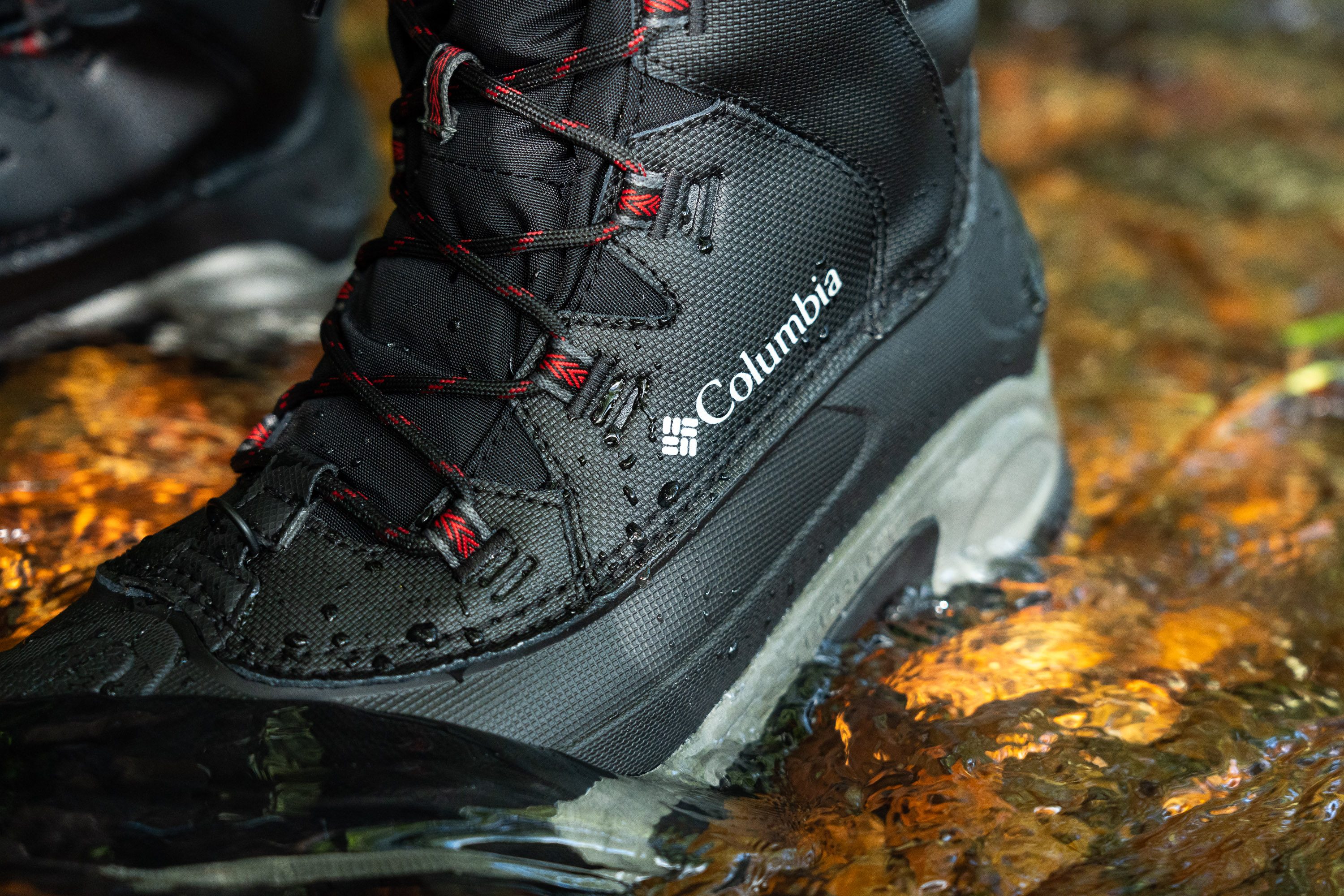
| Bugaboot III | 1 |
| Average | 1.3 |
Stability
Lateral stability test
There is so much support packed into the Columbia Bugaboot III that our feet (and legs!) were practically confined. In a good way.
We believe that the boot will prevent us from feeling wobbly and unstable once the colder months start to kick in.
Torsional rigidity
The structure of the Bugaboot III is rock-solid! We could barely get a little twist out of it in our manual assessment. For that reason, we gave this boot the highest score on torsional rigidity - 5 out of 5.
You would have to try really hard to twist the ankle in this boot.
| Bugaboot III | 5 |
| Average | 4.4 |
Heel counter stiffness
The bottom of the heel counter is very rigid. It did a fantastic job of keeping our heels in place throughout the test hike.
However, we rated it as 4 out of 5 instead of 5 on the stiffness test because it has a little give around the Achilles. Without that give, the boot would feel like a cast!
| Bugaboot III | 4 |
| Average | 3.6 |
Midsole width - forefoot
The platform width is MASSIVE on this Columbia boot.
We measured the widest part of the boot's forefoot at 124.6 mm which is over a centimeter wider than average!
Having such a wide landing surface certainly makes your steps more confident on those slushy trails.

| Bugaboot III | 124.6 mm |
| Average | 111.5 mm |
Midsole width - heel
The sole width is also quite impressive in the heel. In its widest part, we got 97.5 mm which is about half a centimeter wider than average.
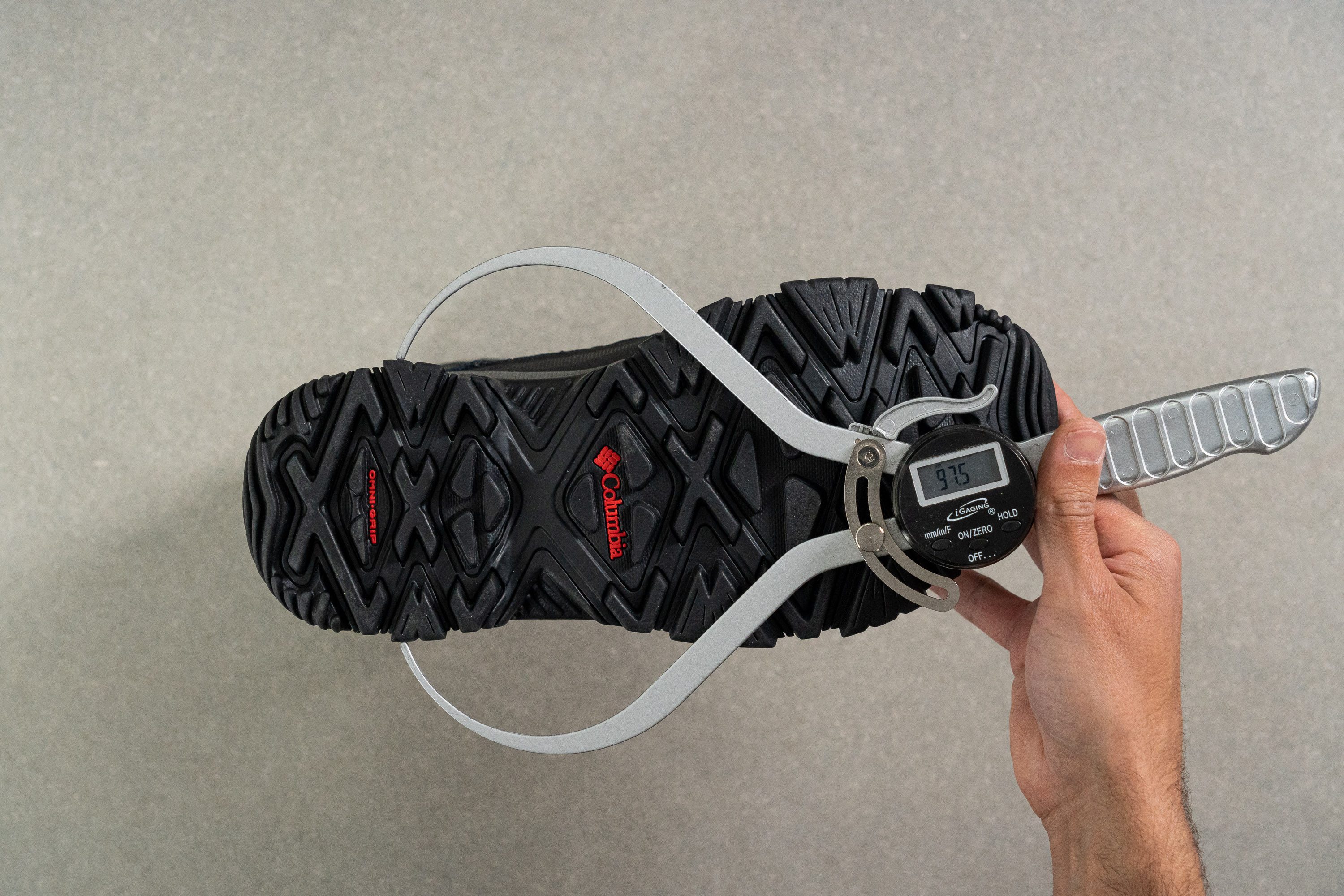
| Bugaboot III | 97.5 mm |
| Average | 87.6 mm |
Durability
Toebox durability
Investing in the Bugaboot III means that you get a pair of boots for more than one winter. Its heavily layered upper is prepared to withstand some serious wear and tear.
We challenged the boot's toebox to a duel with our Dremel and it came out barely damaged. Based on the dent left by the tool, we rated its durability with the highest score - 5 out of 5!
| Bugaboot III | 5 |
| Average | 4.3 |
Outsole hardness
Using a durometer, we measured the boot's rubber for hardness. The reading of 84.9 HC was pretty reassuring to us as it means that there is enough hardness in the outsole to resist abrasion.
The fact that it's slightly softer than the average isn't as concerning to us. Because it is a winter boot, that softness makes the outsole a little bit tackier on slippery surfaces.
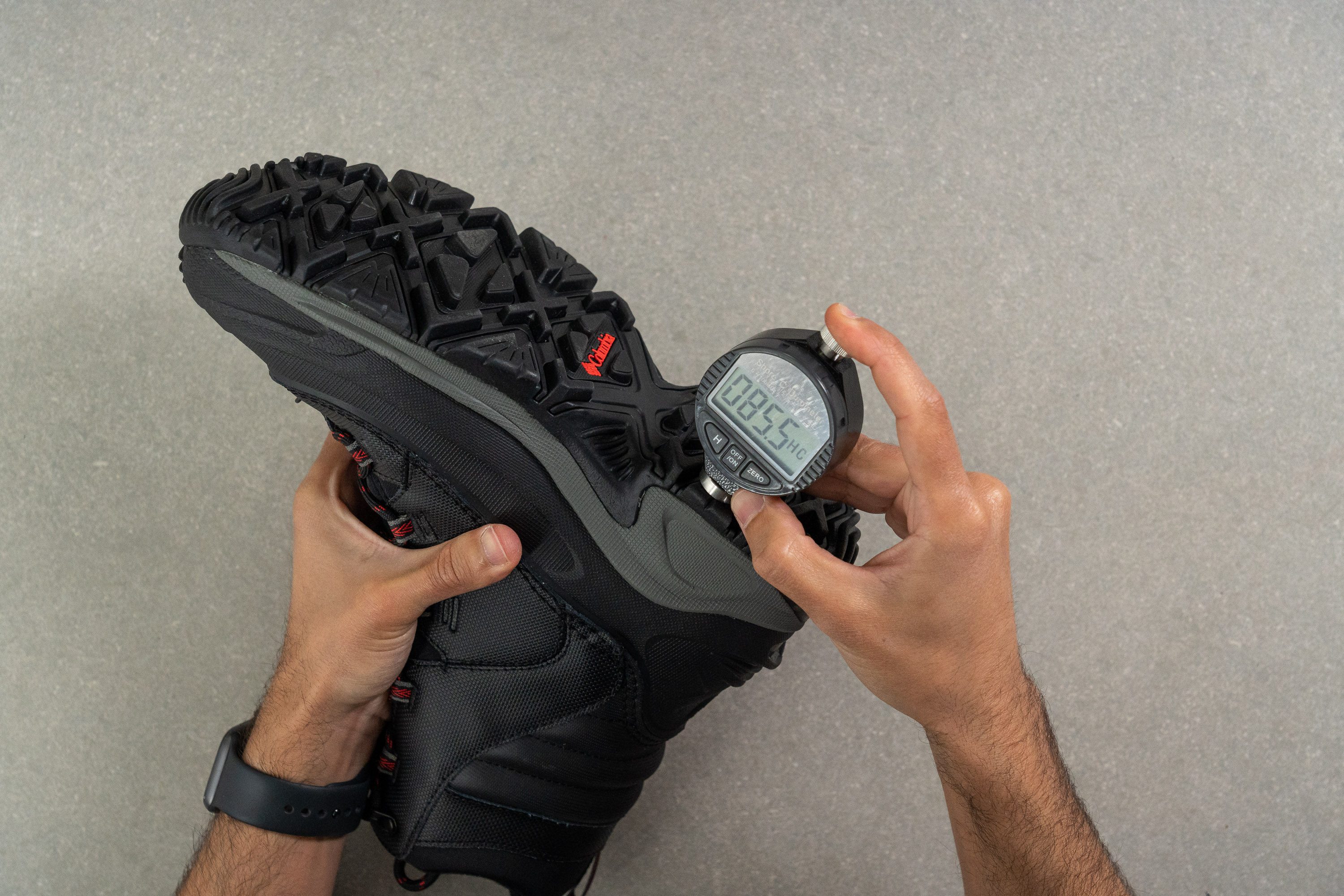
| Bugaboot III | 84.9 HC |
| Average | 87.1 HC |
Outsole thickness
As expected, the amount of rubber is thicker on the Bugaboot. Our caliper shows 3.3 mm of rubber excluding the lugs.
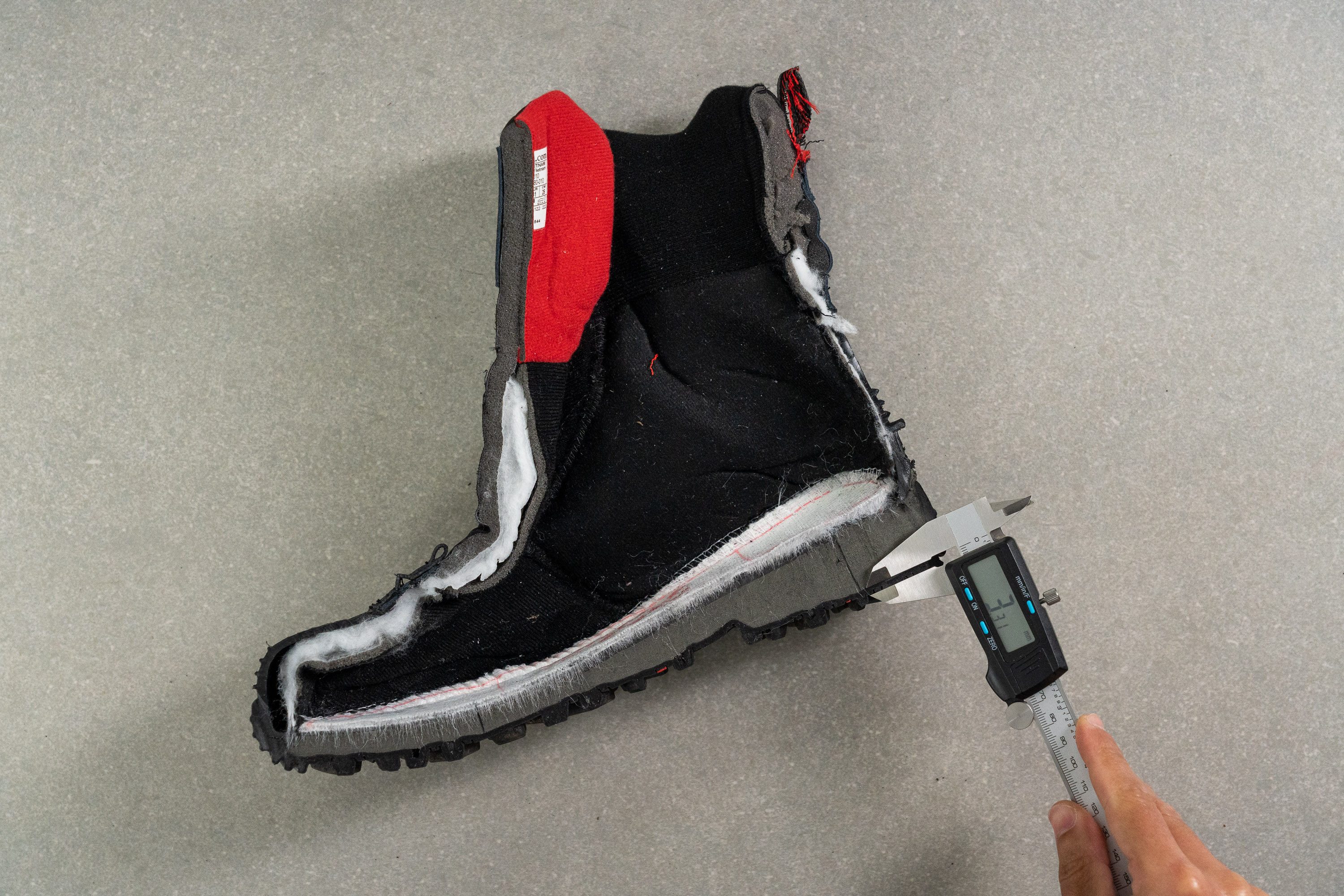
| Bugaboot III | 3.3 mm |
| Average | 2.9 mm |
Misc
Insole thickness
To keep you even warmer and cozier, this Columbia boot features an exceptionally thick insole. Measuring it in the heel with a caliper, we got 10.7 mm - about 4 mm thicker than average!
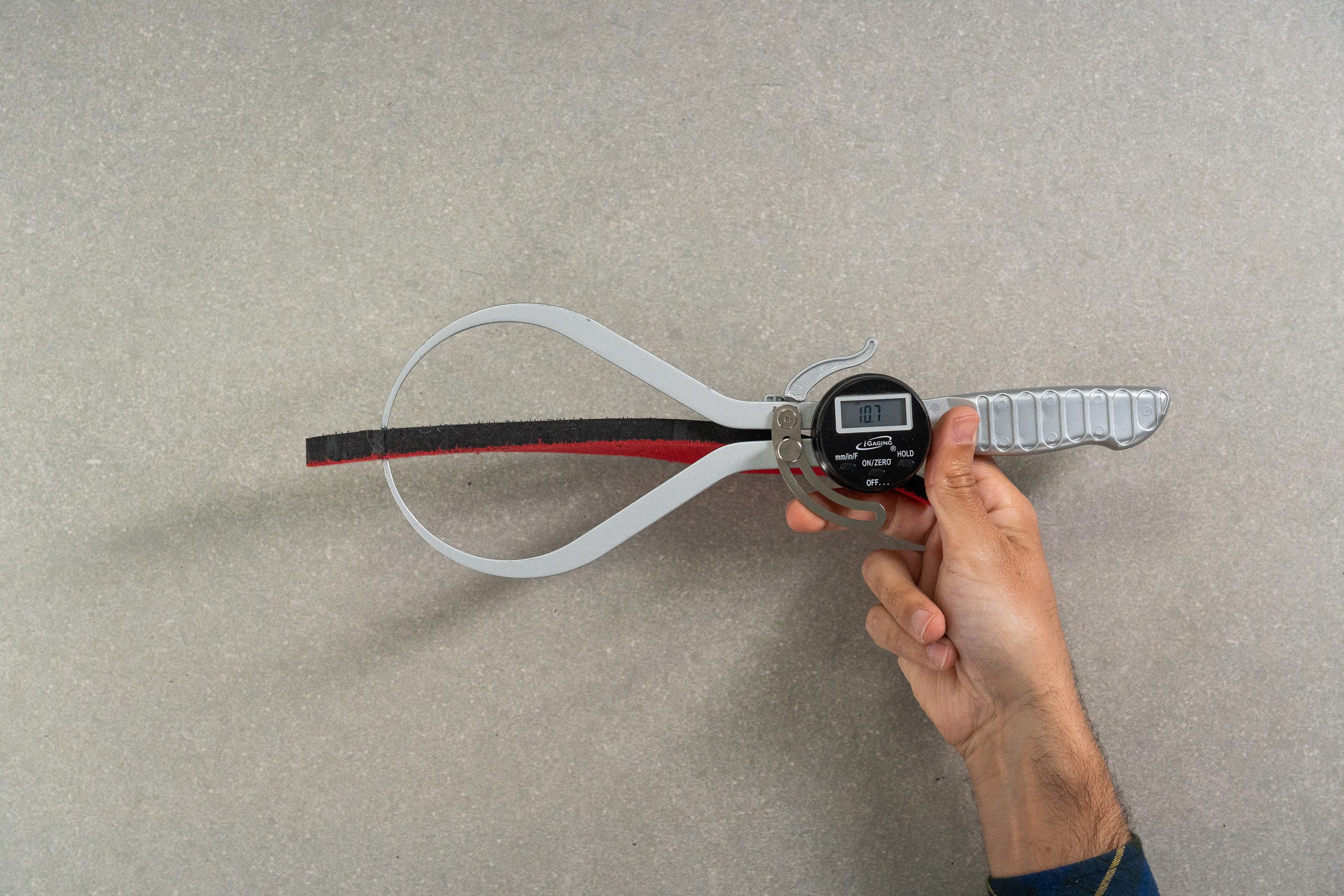
| Bugaboot III | 10.7 mm |
| Average | 6.0 mm |
Removable insole
The Bugaboot's insole is removable. However, if you want to add an orthotic or a warmer insert, make sure that it's not thicker than the boot's default insole (11 mm). Because it can make the boot's already tight interiors even more cramped.
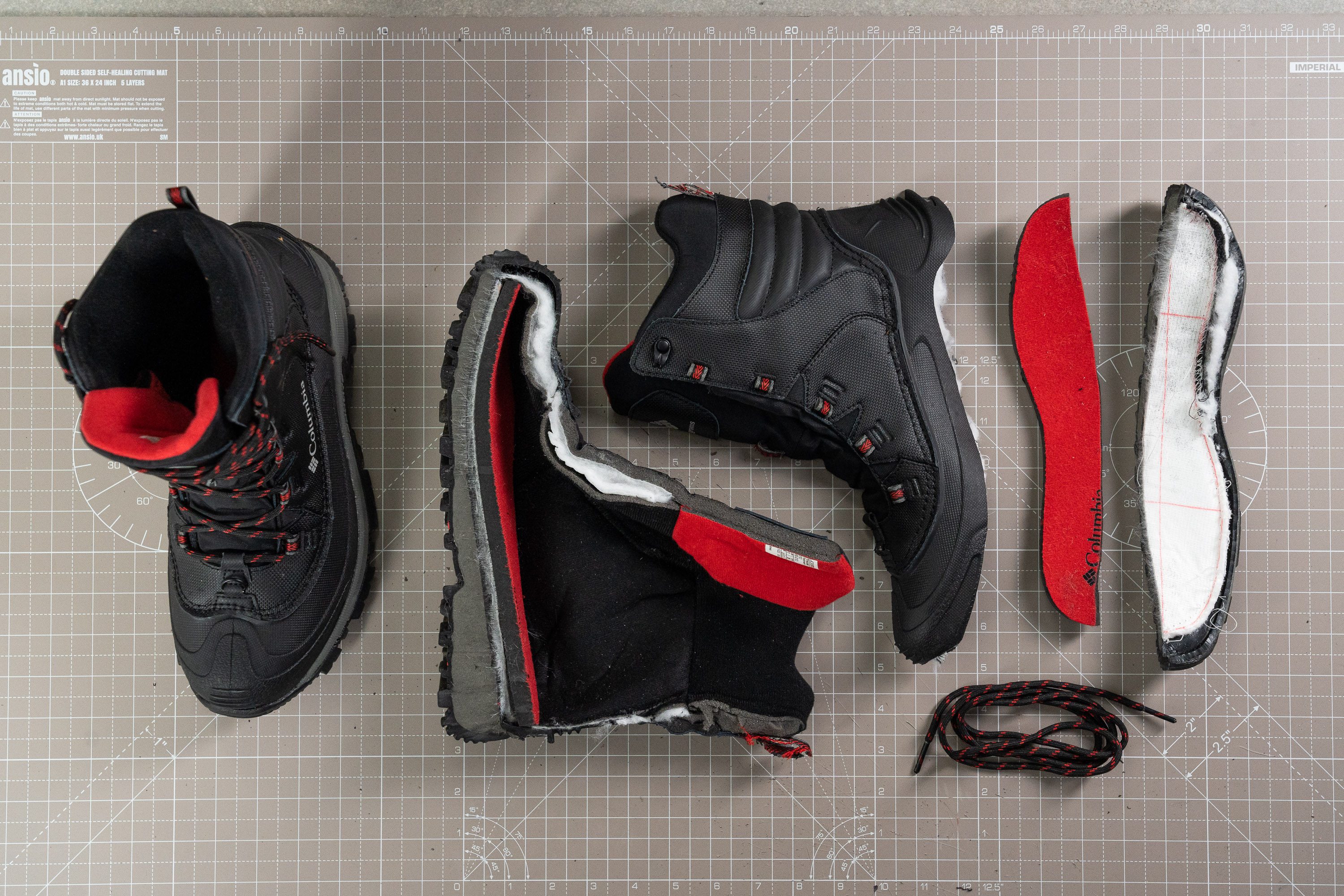
| Bugaboot III | Yes |
This section is a work in progress
Midsole softness in cold (%)
Our freezer helped to put the Columbia Bugaboot III in "winter mode." After keeping the boot in it for 20 minutes, we repeated the durometer measurement and got 32.5 HA instead of the initial 26.8 HA.
That's about as firm as most hiking boots get in low temperatures.
It doesn't mean that the boot is going to feel like a brick though. Its cushioning will break in a little as it warms up from your body temperature.
The Bugaboot III doesn't get critically harder. Based on our measurements, the difference is fairly average - 21.5%.
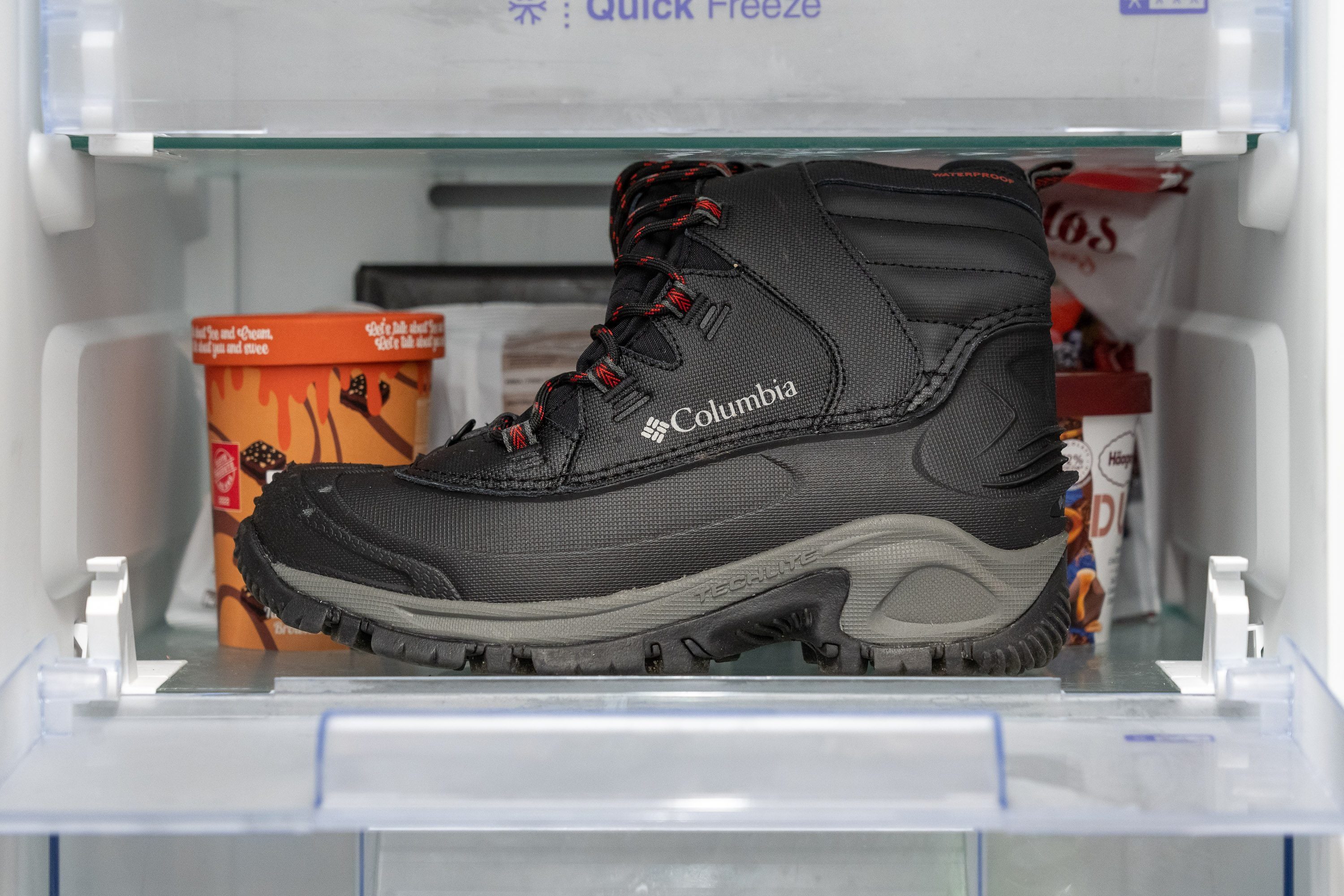
| Bugaboot III | 22% |
| Average | 20% |
Tongue padding
Insulation aside, there is a generous amount of padding stuffed into the tongue. We measured its thickness at 14.2 mm, a little puffier than the average.
From our experience, it buffered the lace pressure quite successfully.
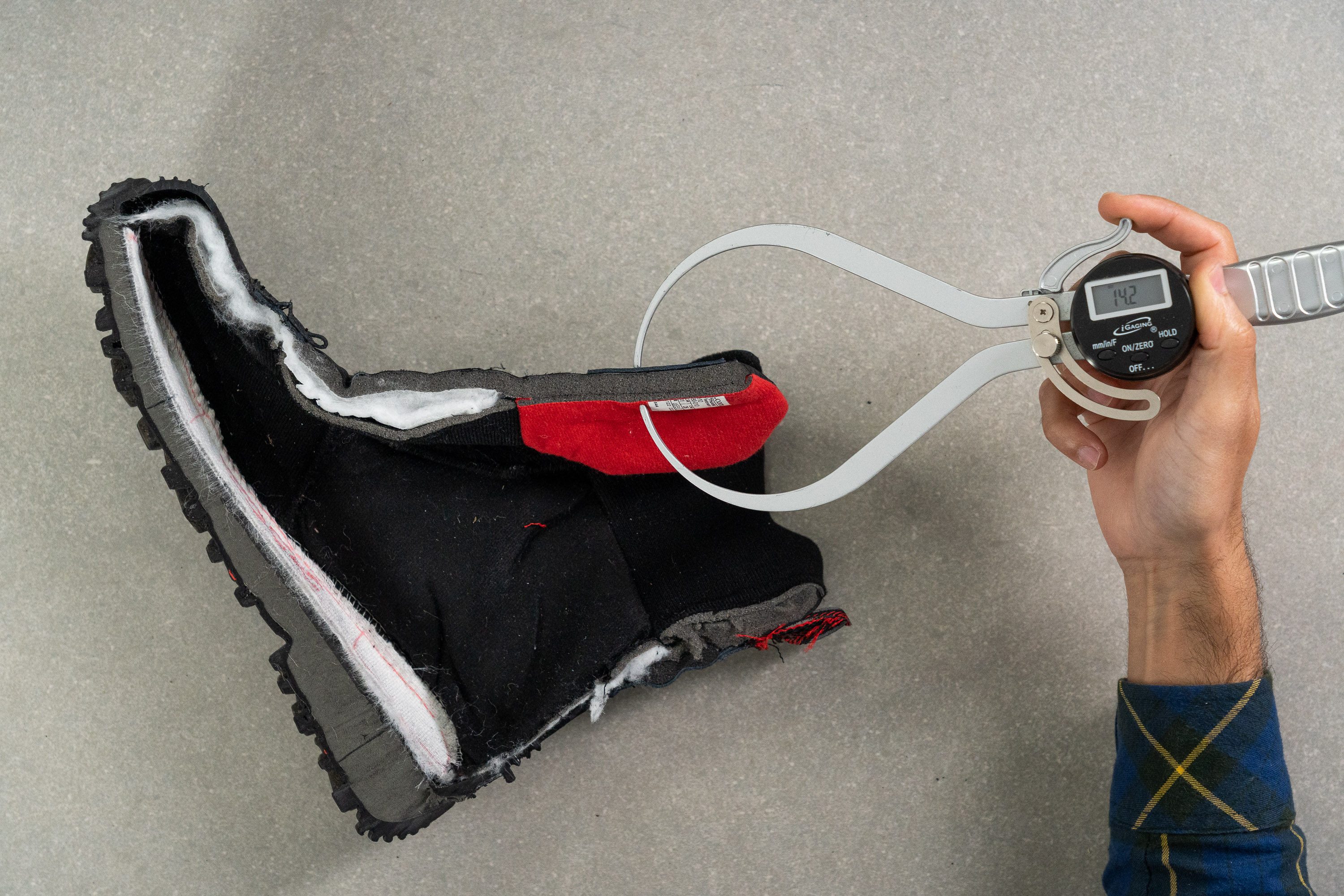
| Bugaboot III | 14.2 mm |
| Average | 11.2 mm |
Tongue: gusset type
The boot's tongue is fully attached on both sides. That's the design we would expect from a waterproof insulated winter boot. It protects the interiors from outdoor elements, keeping the feet safe and warm.
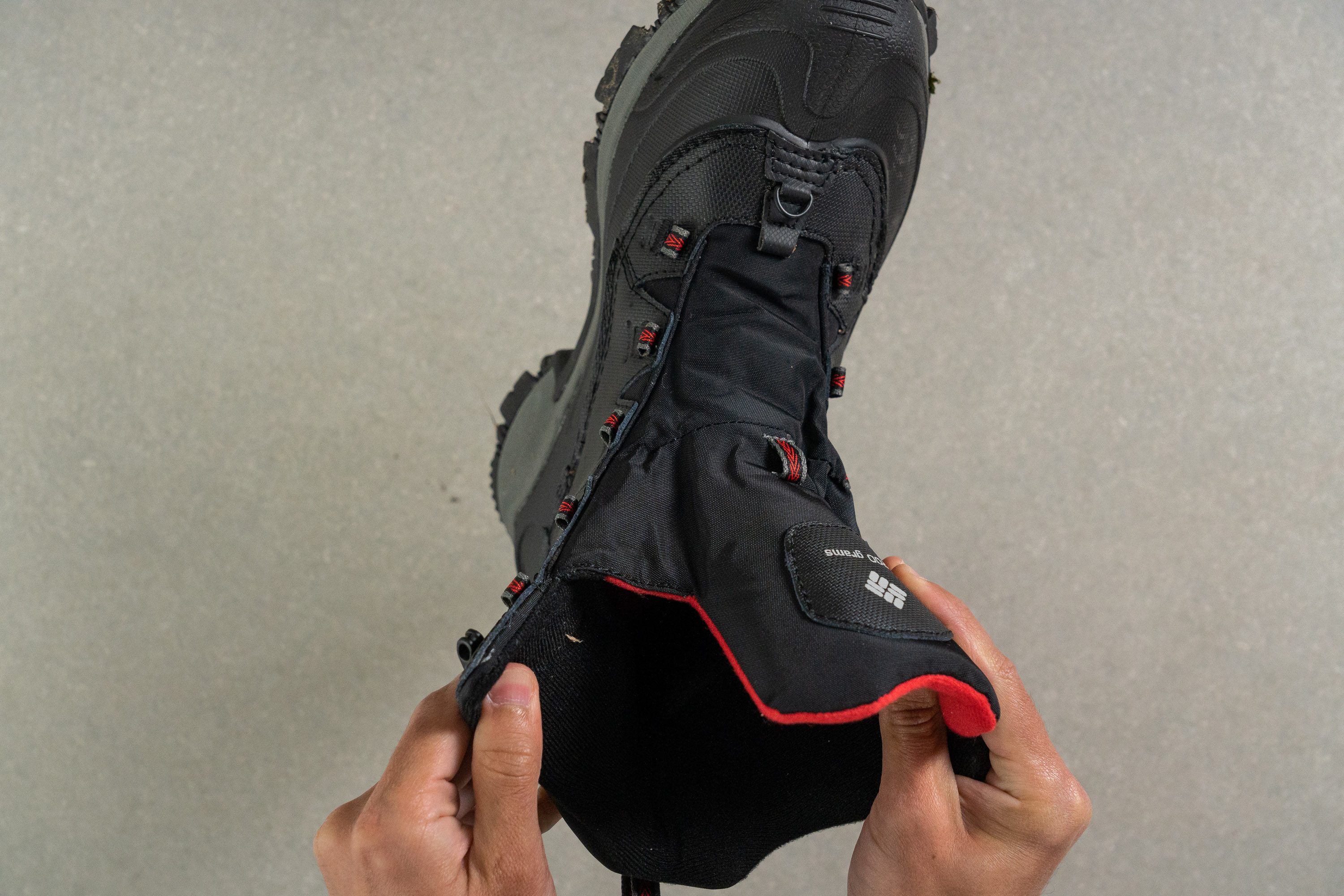
| Bugaboot III | Both sides (full) |
Heel tab
Columbia added a small finger loop at the top of the collar. Even though it's meant to assist with getting the boot on, the latter still requires some effort. The attached tongue narrows the boot's opening quite a bit.

| Bugaboot III | Finger loop |

